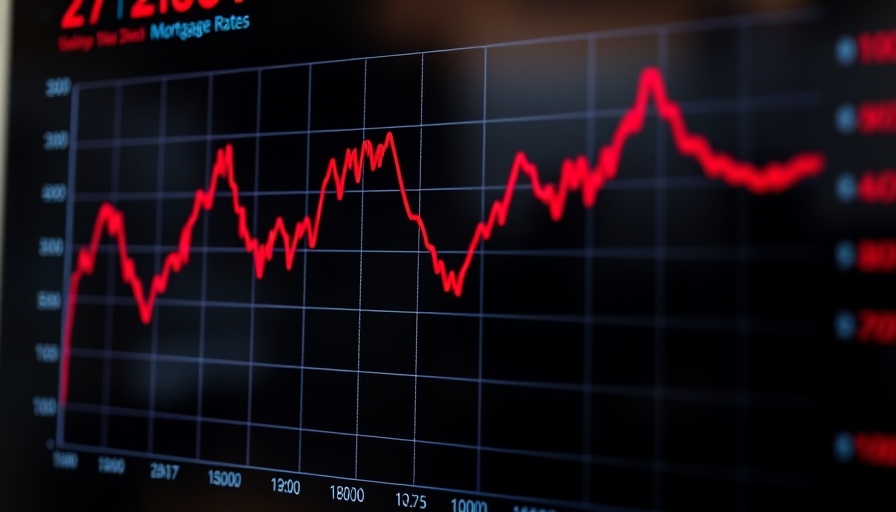
Understanding the Recent Rise in Mortgage Rates
This week has seen a gradual increase in mortgage rates, wrapping up a period of stability that many borrowers found favorable. As of March 21, 2025, the average rate for a 30-year fixed mortgage stands at 6.72%, marking a subtle uptick of 0.01%. This change indicates a whisper of volatility in a housing landscape that's been relatively calm, following a tumultuous period of changes and challenges in the financial market.
Economic Indicators Fueling Market Sentiment
The catalyst for these market fluctuations appears to lie in broader economic sentiments, particularly concerning the U.S. administration's Tariff policies. Recent statements from the White House, suggesting a potential easing of tariff restrictions, have generated mixed reactions. Generally, relaxed tariffs can bolster stock prices, leading to a potential decline in bond appeal—an effect observed during yesterday's trading. For mortgage rates, which often follow bond market trends, this news has translated to a slight movement upwards, despite the overall market remaining stable.
Historical Context of Mortgage Rates
To understand today's rates, we need to look back at recent history. Mortgage rates have been influenced heavily by economic stability and government fiscal policies over the past few years. The peak rates seen in 2022 were a result of aggressive rate hikes from the Federal Reserve aimed at controlling inflation. These past highs, coupled with present shifts in tariff policies, underscore the sensitivity of mortgage rates to geopolitical and economic changes.
Market Trends and Consumer Implications
As rates gently increase, potential homebuyers may feel a bit of apprehension about entering the market. Higher rates generally lead to increased monthly mortgage payments, which could dampen demand in an already competitive housing market. However, it's important for consumers to keep a close eye on trends and consider locking in rates when they show signs of stability or reduction. The nuanced relationship between encompassing fiscal policies and consumer responses plays a significant role in shaping housing market dynamics.
What Lies Ahead for Borrowers?
Looking ahead, there are several factors at play that may impact future mortgage rates. According to analysts, if the administration continues to express openness toward easing tariffs, we might see stock markets gain strength, which could further influence bond market dynamics. Conversely, should inflationary concerns persist or escalate, we could witness additional rate hikes from the Fed that might push mortgage rates higher. For borrowers and potential homebuyers, it's crucial to remain vigilant and informed about these changing conditions.
Practical Tips for Navigating Increasing Rates
For those already in the market or considering entering it, several strategies may help mitigate the impact of rising mortgage rates. First, consider taking advantage of rate locks when available, allowing you to secure favorable terms despite fluctuations. Additionally, engaging with multiple lenders can provide a comparative backdrop that may save you funds on monthly payments. Lastly, remaining flexible on your homebuying timeline could position you to react advantageously to shifting market conditions.
The mortgage landscape remains intricately connected to global macroeconomic factors. Staying informed will empower consumers to make educated choices in their financial futures. As we continue to monitor these shifts, the overall sentiment in the market will be key to understanding how rates may fluctuate in the coming weeks.
 Add Row
Add Row  Add
Add 




 Add Row
Add Row  Add
Add 








Write A Comment